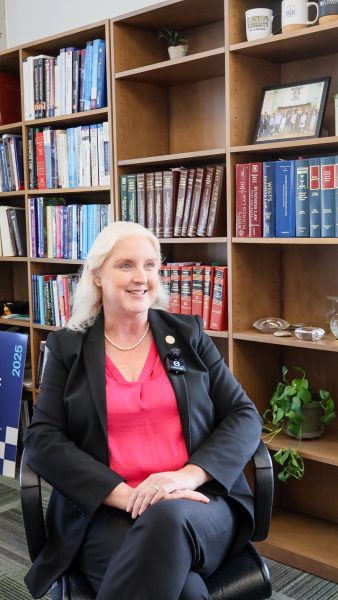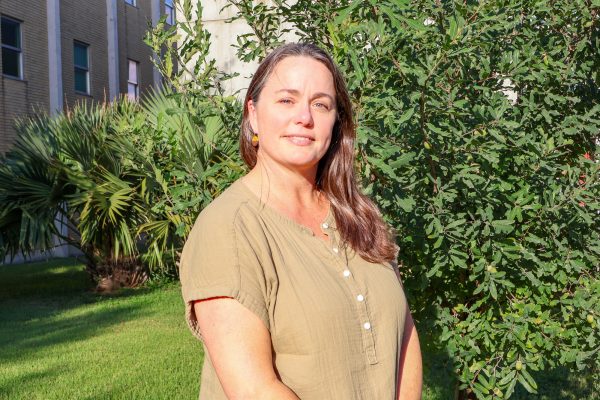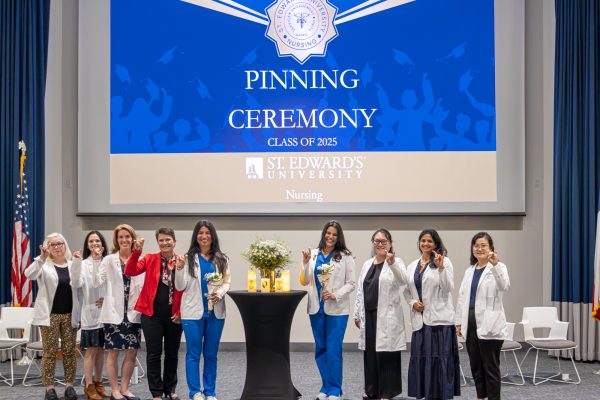Going abroad raises questions on affordability, study options

Many questions arise when students decide they want to study abroad, including those of finances and living situations.
Students can bring any such issues to Natacha Martin, assistant to the dean of the School of Humanities.
“I see my role as trying to overcome any obstacles,” Martin said.
Martin urges students to start early and plan, especially if they are freshmen already considering study abroad.
“There are some life issues that I think play into this decision,” Martin said.
One of the biggest concerns is most likely how a student will afford to go abroad.
If students travel abroad through a faculty-led program at St. Edward’s University for the summer, their financial aid will be divided up into three semesters (spring, summer, and fall), instead of two (spring and fall). This option can help students who have to stay an extra summer or just want to go abroad the summer after they have already been in college for four years.
A student currently studying abroad in Angers, France in the spring of 2013 is paying $15,355 in St. Edward’s tuition, according to the Office of International Education’s (OIE) website. There is also a $5,195 program fee, making the total cost $20,550.
The cost includes tuition for 12-18 credit hours, single occupancy housing in student residences, international health insurance, pre-departure and on-site orientation and certain excursions. It excludes course textbooks, technology, round-trip airfare, meals, transportation within Angers, personal expenses and passport and visa application fees.
All of a student’s financial aid and scholarship would go towards tuition payment.
If a student chooses to go abroad through a third-party provider program, they can use their private scholarships, student and parent loans, as well as the Federal Pell Grant, said Sarah Garza, financial services counselor.
However, if a student chooses to go abroad with an exchange program such as the International Student Exchange Program, ISEP, a student would be able to use their federal and institutional financial aid, said Laura Ray, assistant international advisor.
“Essentially, they pay what they usually pay here at SEU for a semester or year abroad with their financial aid included,” Ray said.
Similar to a third-party provider program, ISEP also has a direct program in which a student pays ISEP directly. A student’s federal financial aid can be applied to the program cost, Ray said.
Financial questions aside, the first step a student normally goes through when expressing interest in studying abroad is to attend a Study Abroad 101 session at the OIE. After attending a session, a student will be placed with an advisor within the OIE to determine what program they want.
Students will work with the dean or associate dean of their school on the course approval process if that is necessary, Ray said.
Students are required to meet with their financial aid counselor or with Garza in the Office of Student Financial Services to understand how their financial aid can be used, Ray said.
Both Ray and Garza said that they help students find outside scholarship and funding. However, the two provide support for other questions regarding study abroad, as well.
“It’s not a matter of ‘can I afford to go?,’ it’s more a matter of which study-abroad program and when,” Garza said.
Eriann Panado, sophomore, is currently studying abroad through ISEP in Aalborg, Denmark at Aalborg University for the spring semester.
Panado was able to pay St. Edward’s tuition since she was going abroad through ISEP, but she said she has to pay for her own books, excursions, a $400 resident permit, a bus pass, bike rental for the semester, as well as about a $900 round trip flight from San Diego (where she is originally from) to Aalborg.
Despite the many questions and issues that can occur in the process, most students who study abroad share the same sentiment, according to Martin.
“Study abroad was the defining experience [in their college career,]” Martin said.






